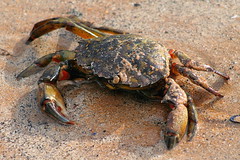Following the scientific method: an example

Experiments in science that don’t reinforce scientists’ hypotheses can be vitally important in understanding complex systems. Serious scientists don’t fudge the results or hide the data.
Here’s a recent example of a global warming study to show the effects of CO2-caused ocean acidification on the shells of crustaceans. Researchers at Woods Hole Oceanographic Institution (WHOI) found that, contrary to their expectations, many of the crustaceans built tougher shells in waters that were more acidified from higher levels of CO2.
According to the press release,
“We were surprised that some organisms didn’t behave in the way we expected under elevated CO2,” said Anne L. Cohen, a research specialist at WHOI and one of the study’s co-authors. “What was really interesting was that some of the creatures, the coral, the hard clam and the lobster, for example, didn’t seem to care about CO2 until it was higher than about 1,000 parts per million [ppm].” Current atmospheric CO2 levels are about 380 ppm, she said. Above this level, calcification was reduced in the coral and the hard clam, but elevated in the lobster.
The “take-home message, “says Cohen, is that “we can’t assume that elevated CO2 causes a proportionate decline in calcification of all calcifying organisms.” WHOI and the National Science Foundation funded the work.
Sounds like a useful project to add to the knowledge about CO2’s effects. Also, sounds like they’re following the scientific method.
H/T Julian Morris on Facebook